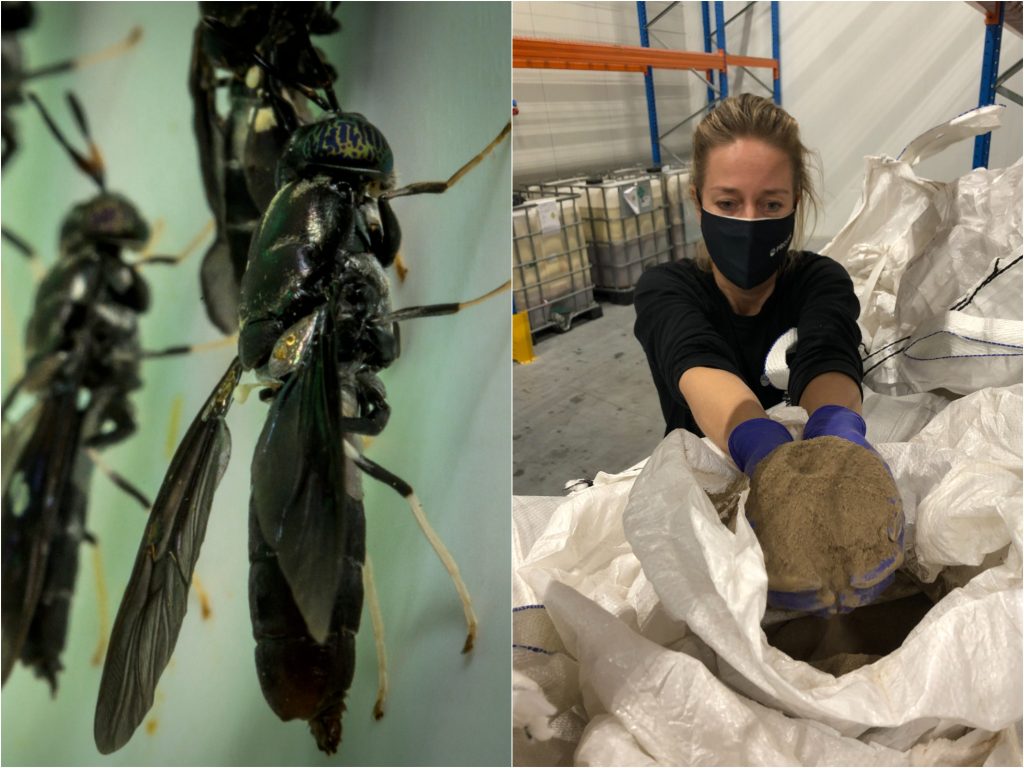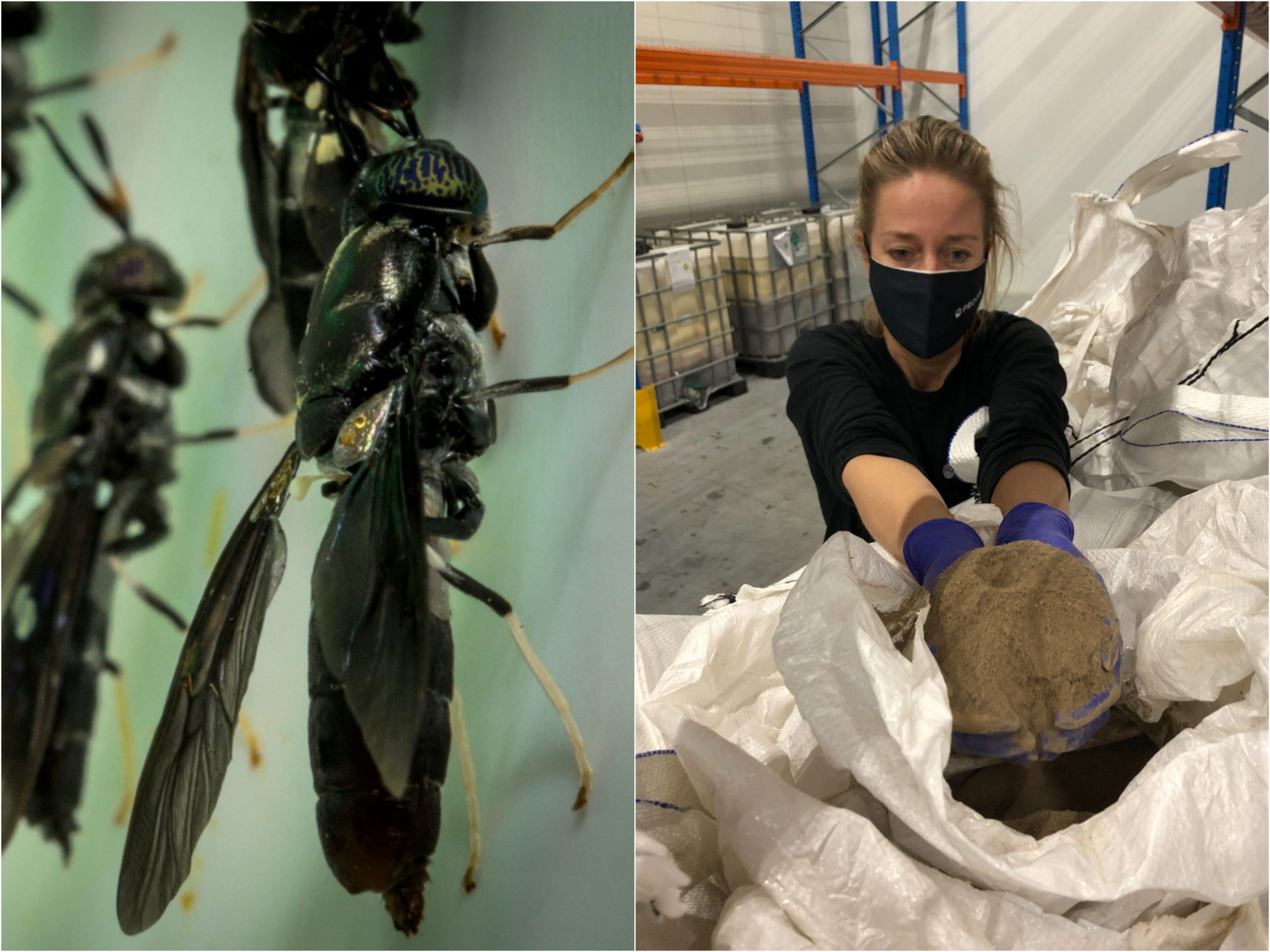
- Insider went inside the world's largest fly farm harvesting larvae as a sustainable protein source.
- Insect protein is becoming increasingly popular in animal feed, replacing soya or fishmeal.
- Protix operates from a high-tech farm in the Netherlands, with plans to scale to 10 new locations.
An insect farm might conjure images of fields, barns, and muddy boots, not a fully automated, high-tech facility in a commercial warehouse on an industrial estate.
Only the name, "Protix," gives away the nature of this facility in the town of Bergen op Zoom in the south of the Netherlands, where the insect company has operated since 2019.
This 15,000-square-meter warehouse is the world's largest black soldier fly farm. Demand for edible insects — and facilities like these — is on the rise.
At the moment, around 80% of Protix's production is used for pet food, with the rest used for aquafeed and poultry feed.
This is set to change as fish, poultry, and pig farmers seek alternative sources of protein to fishmeal and soy. Insect protein in poultry and pig feed was approved last year by the EU, which also greenlighted house cricket, yellow mealworm, and migratory locusts for human consumption.
Protix is preparing to announce 10 new locations as it expands in Europe and North America.
Its facilities are the culmination of a decade of intense R&D and the conviction that insect protein could improve the environmental footprint of our food.
This plant has produced 15,000 tonnes of live larvae per year for the last two years; that's 10,000 tonnes of protein per hectare per year. Soy, in comparison, produces just one tonne of protein per hectare per year.
This is part nature, part nurture. Nature provided the black soldier fly, a champion bio converter. Protix has nurtured the technology to farm it, which it has spent a decade perfecting.
The first thing you notice as you walk in — and the only giveaway that this facility is indeed a farm — is the smell that comes from the insects' feed, which reminded me of the odor of a hamster cage.
The plant is split into sections that deal with different stages of the process, but its beating heart is the vertical farm.
This is where the larvae live, in crates stacked almost four meters high and more than 16 meters deep in dedicated storage units. The temperature is kept at a balmy 30-degrees Celsius.
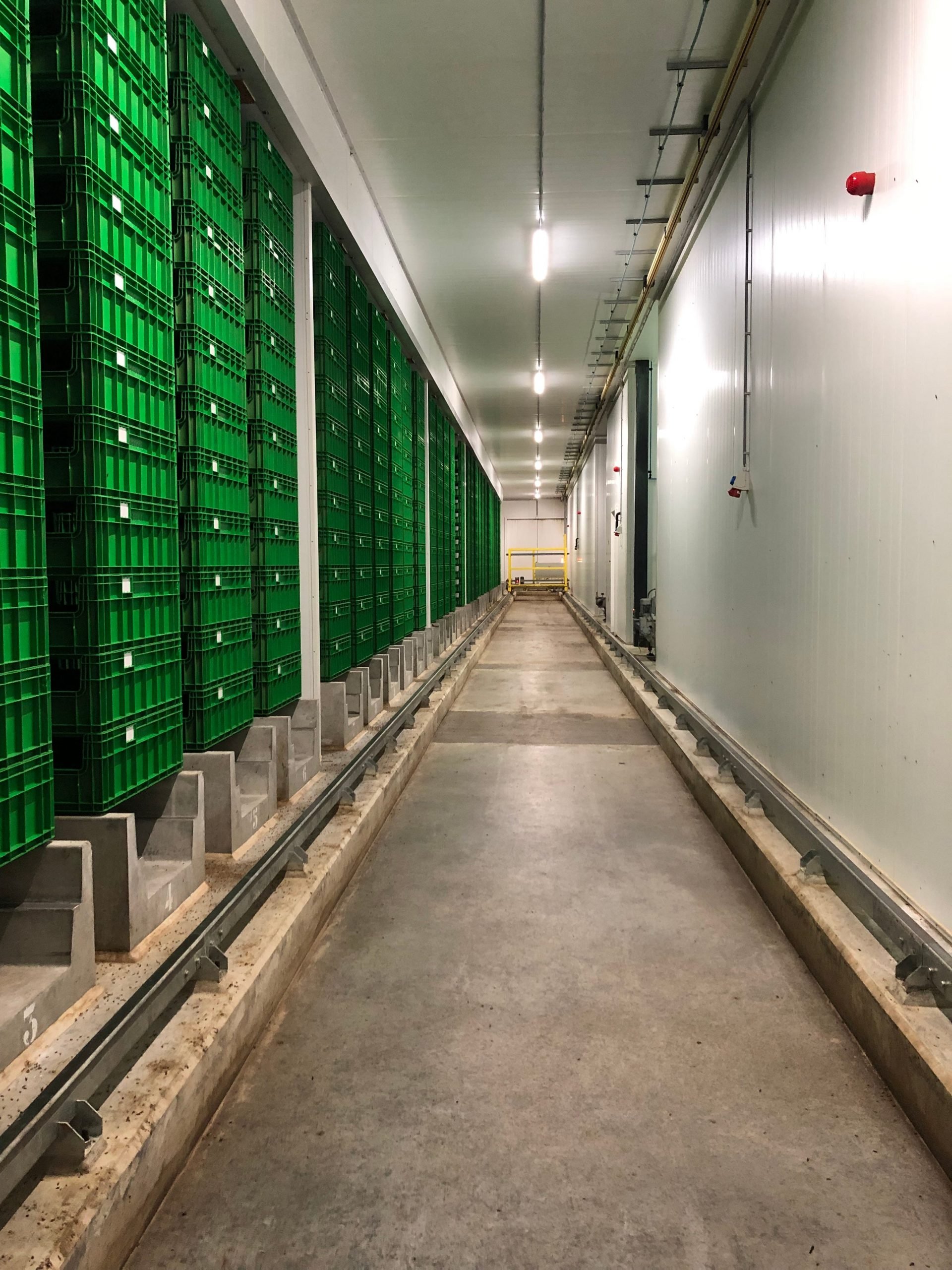
There are three such storage areas, arranged around a central conveyor system where feeding and harvesting are done. Technicians control every step of the process through a central console. Everything here is bespoke, from the shape of the crate to the proprietary software.
"You can't buy anything off the shelf," Kees Aarts, Protix's founder and CEO, told me as we toured the facility.
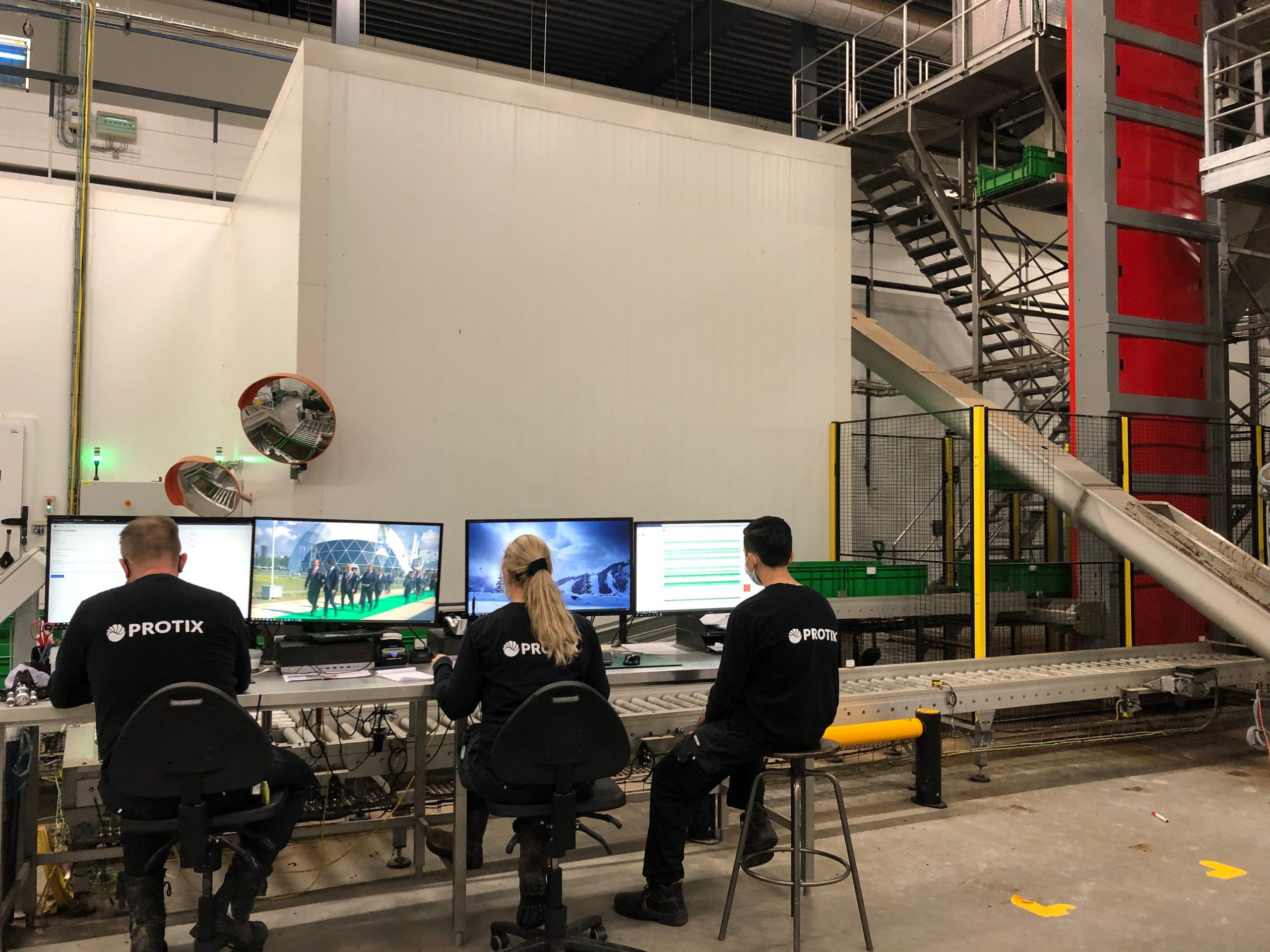
The larvae are fed by-products from the food and drink industry, such as potato waste from a French fry factory or waste grain.
Feed ingredients are delivered daily and stored in silos at the back of the plant. They are then mixed and turned into a special puree in giant mixers.
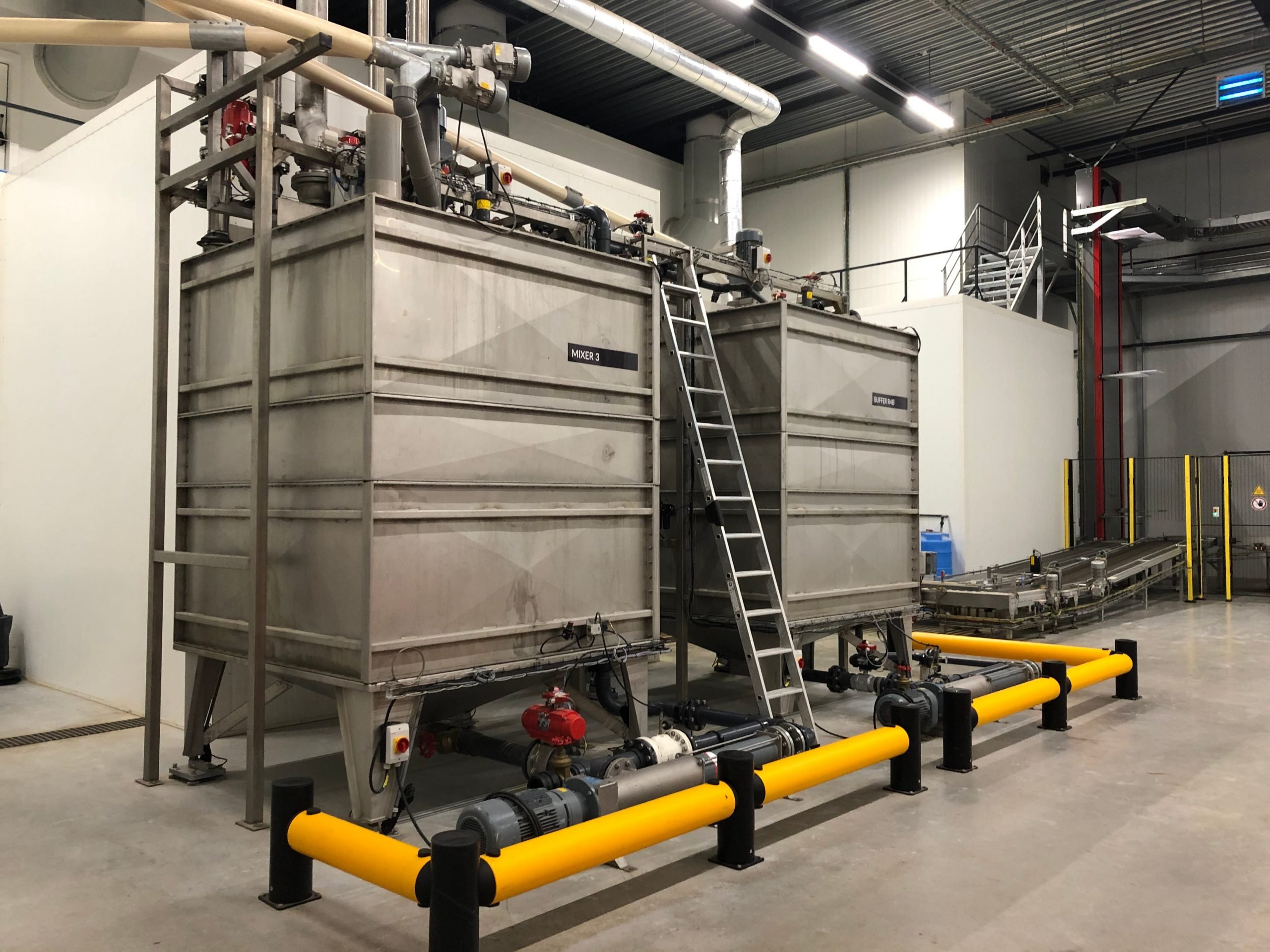
The larvae are fed every couple of days: The stacker crane pulls out entire columns of crates, which are sent round the conveyor system to be filled with feed and then taken back to the vertical storage area.
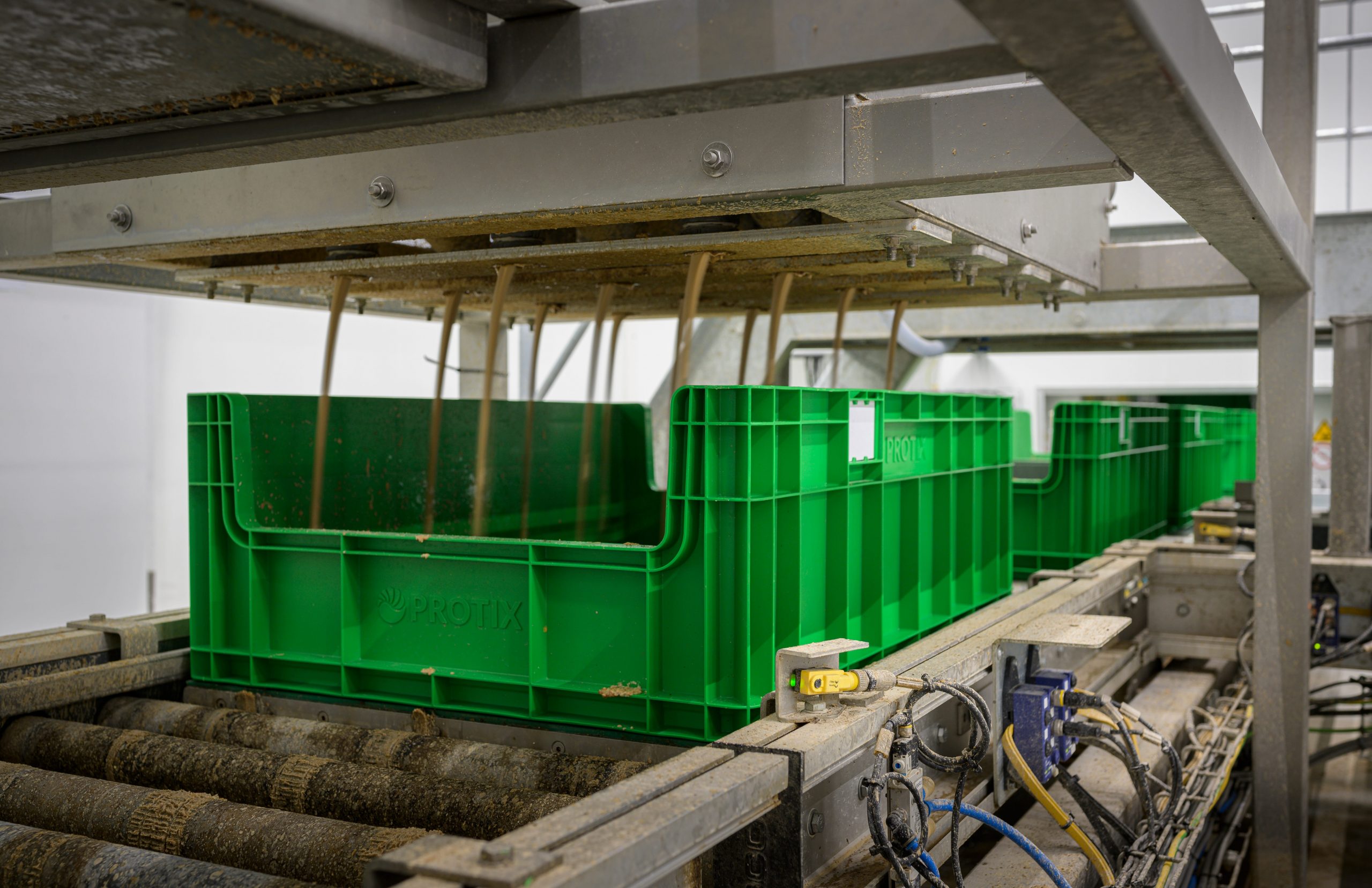
Larvae are harvested in just six to eight days. One percent of the larvae are left to pupate into adult flies and used for breeding, which is done in a special chamber, out of bounds to visitors.
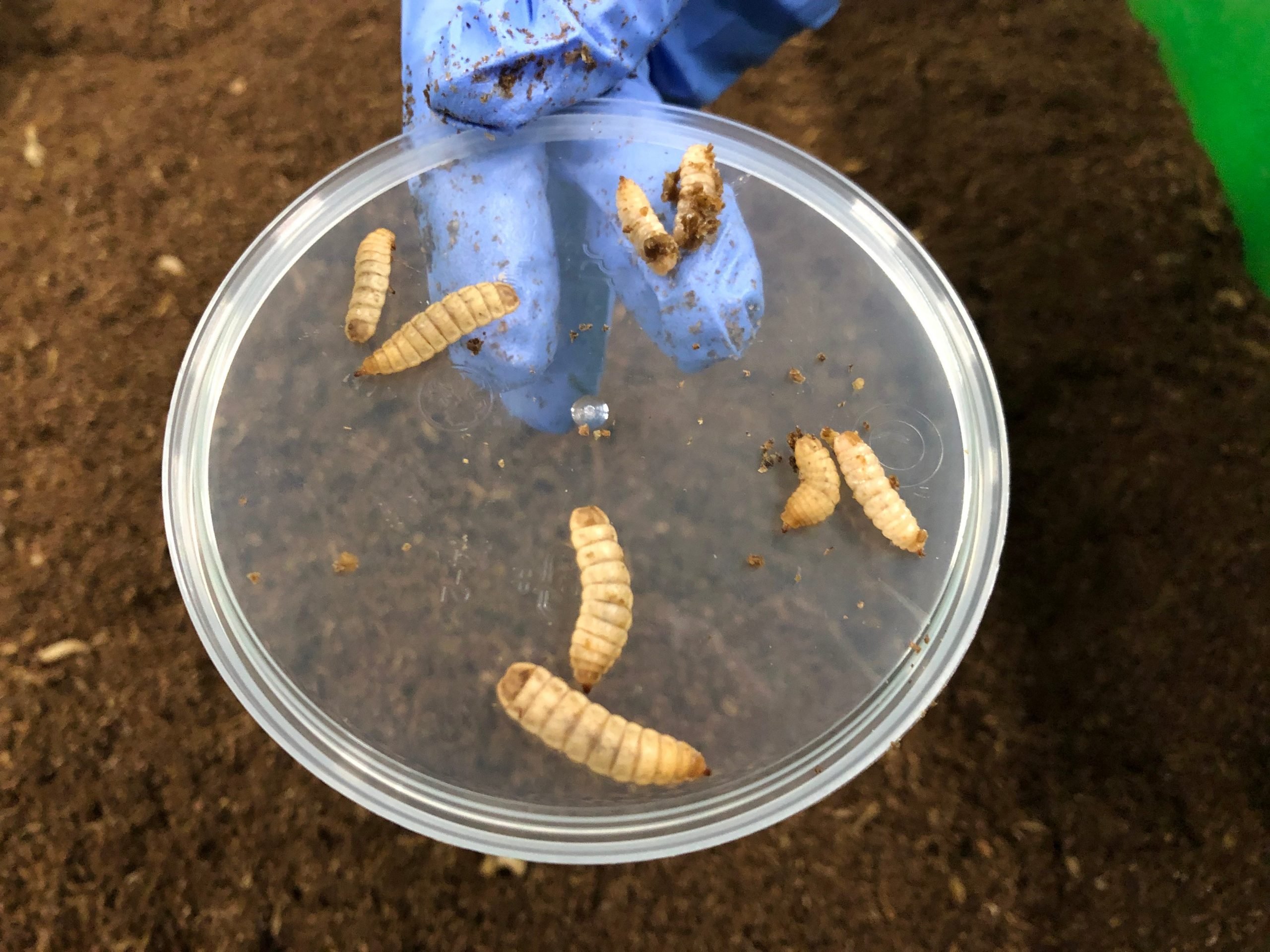
For harvesting, crates are brought back to the central conveyor system and tipped into a giant sieve, where the larvae are separated from the leftover feed before being washed.
The larvae are then sent to be processed in an adjoining room. Protix's main products are a protein meal and an oil, which must be separated through a centrifuge. The protein is then packaged into bulk bags and the oil in container tanks.
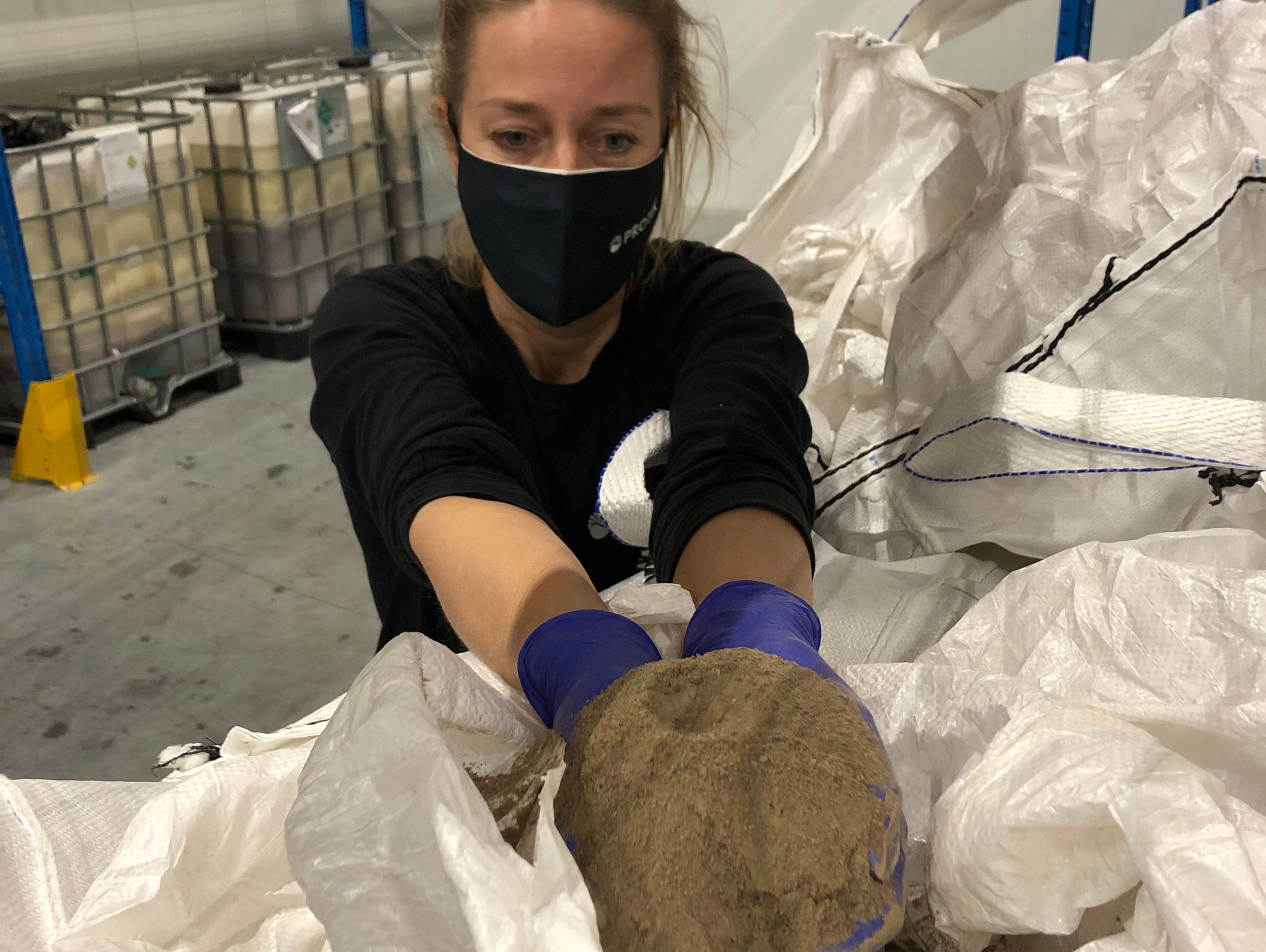
"It's like having the seed company, the farmer, the miller, and the packaging company all under one roof to produce a protein meal," Aarts said.
